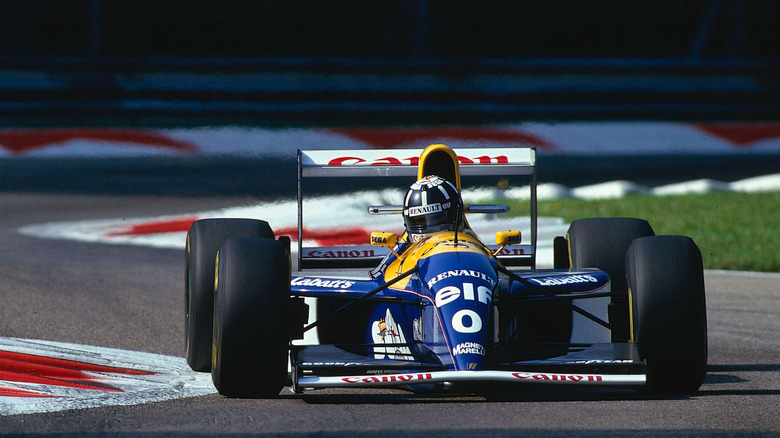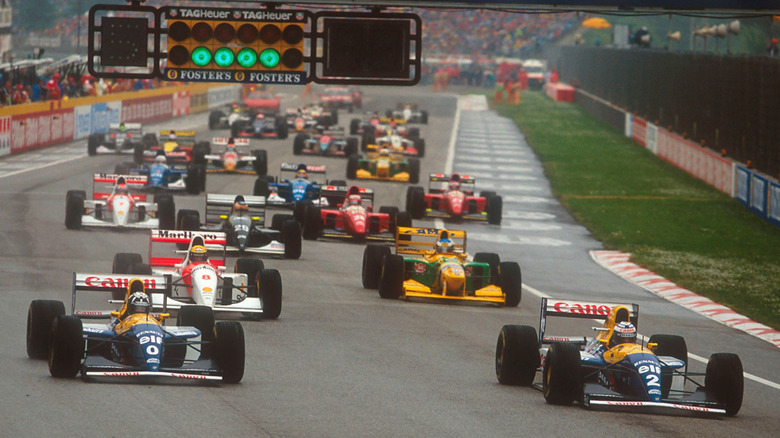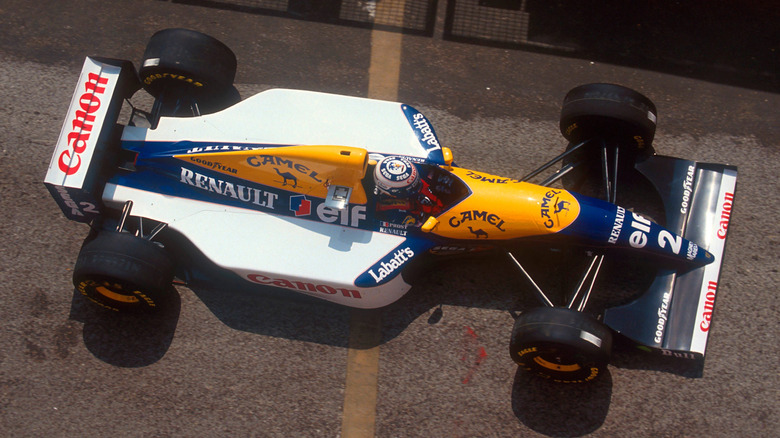Why Did F1 Ban CVTs?
Continuously-variable transmissions (CVTs) are equal-parts loved for their engineering accomplishments and mechanical simplicity, and loathed for... Well, a plethora of reasons in the automotive community. The core concept of how CVTs work is by using a belt, rather than gears, to manipulate a vehicle's final drive ratio. There's a variety of different sorts of CVTs but they all use this common principle to keep the car's engine revs at a steady rate, so the engine is always producing its peak horsepower (or rests at its most efficient speed). Essentially, it's like having a car with infinite gears.
Sounds useful in Formula One racing, right? Well it would be, if it weren't banned quite literally as soon as it was introduced. The car that employed the first (and only) F1 CVT was the 1993 Williams FW15C. The FIA has strict guidelines as to what constitutes a legal Formula One car, including the transmission. Prior to 1993, CVT belts weren't thought of as strong enough to cope with the stresses of F1, hence why no prior stipulation was in-place. There's no need for a rule to apply to a technology which doesn't exist.
However, the rules in this case stated that all F1 cars (at the time) must feature between four to seven gears. That raised an important point — what defines the term "gear" in the context of CVTs? So, rather than reinvent the rulebook and open up the possibility of CVT development, the FIA simply banned these gearboxes, going so far as to specifically name CVTs in the updated rulebooks.
Racing the rulebook
Generally speaking, everyone has a rough idea in their heads of what a Formula One car features. The reason why so many of them are relatively similar is because of the FIA guidelines, which dictate almost every single piece of an F1 car and what's allowed. When teams don't follow those parameters, such as aerodynamic suction (fan cars), alternate engines like turbines, and other major departures, that's when bans and new rules happen. Most of these rules are in-place to ensure competitive fairness, though they sometimes lend the FIA a reputation for stifling technological innovation among some fans.
Part of the engineer's job description is to bend these rules without breaking them as much as possible. It's an arms-race between the engineers and the lawmakers, which is part of what makes Formula One so well-regarded for its technical accomplishments. This dance is performed using one of three methods by engineers.
The first is simply a "liberal interpretation" of rules in place, the second is incorporating technologies for which there are no rules covering it, and the third is just straight-up deceitfulness. This video by Driver61 covers all of these (and more) if you want to learn more about how F1 teams turned lying into a truly magnificent art form. Of course, this is often to the detriment of teams who do follow the rules, hence why the higher-ups often crack down so swiftly in such cases.
Concerning the FW15C and its CVT
When it was fitted to the Williams FW15C, the CVT-driven powertrain produced a properly surreal noise — have a listen for yourself — as it rocketed down the course. Because of the way these transmissions were designed, this car would, at all times, be perfectly at the top of its power-band. This was coupled to Williams' prior innovations in hydropneumatic active suspension, anti-lock brakes, and power steering, among many other advanced features. Basically, even without the CVT, this car was an absolute marvel of engineering — some of its technology may even be in your car.
Because of this, even without the CVT (and the F1 car never raced with it, since it was, indeed, banned as soon as it was fitted), the car still proved to be a formidable beast on-track. Outfitted with paddle-shifters mated to a traditional sequential manual transmission, Alain Prost took home the championship behind the wheel of his Williams, winning seven Grands-Prix in 1993. Damon Hill, driving the other Williams, captured three wins of his own.
Sadly, the Williams FW15C was subjected to a battery of updates and new rules for the 1994 season. The powers-that-be in Formula One feared for the ever-increasing automation of the sport, with the Williams in particular hosting many of these technologies. So for the following season, many electronic devices such as anti-lock brakes, traction aids, active suspension systems, and of course CVTs were banned outright. Though naturally that didn't stop teams from skirting the rules, a time-honored tradition which continues with every rulebook change to this day.


